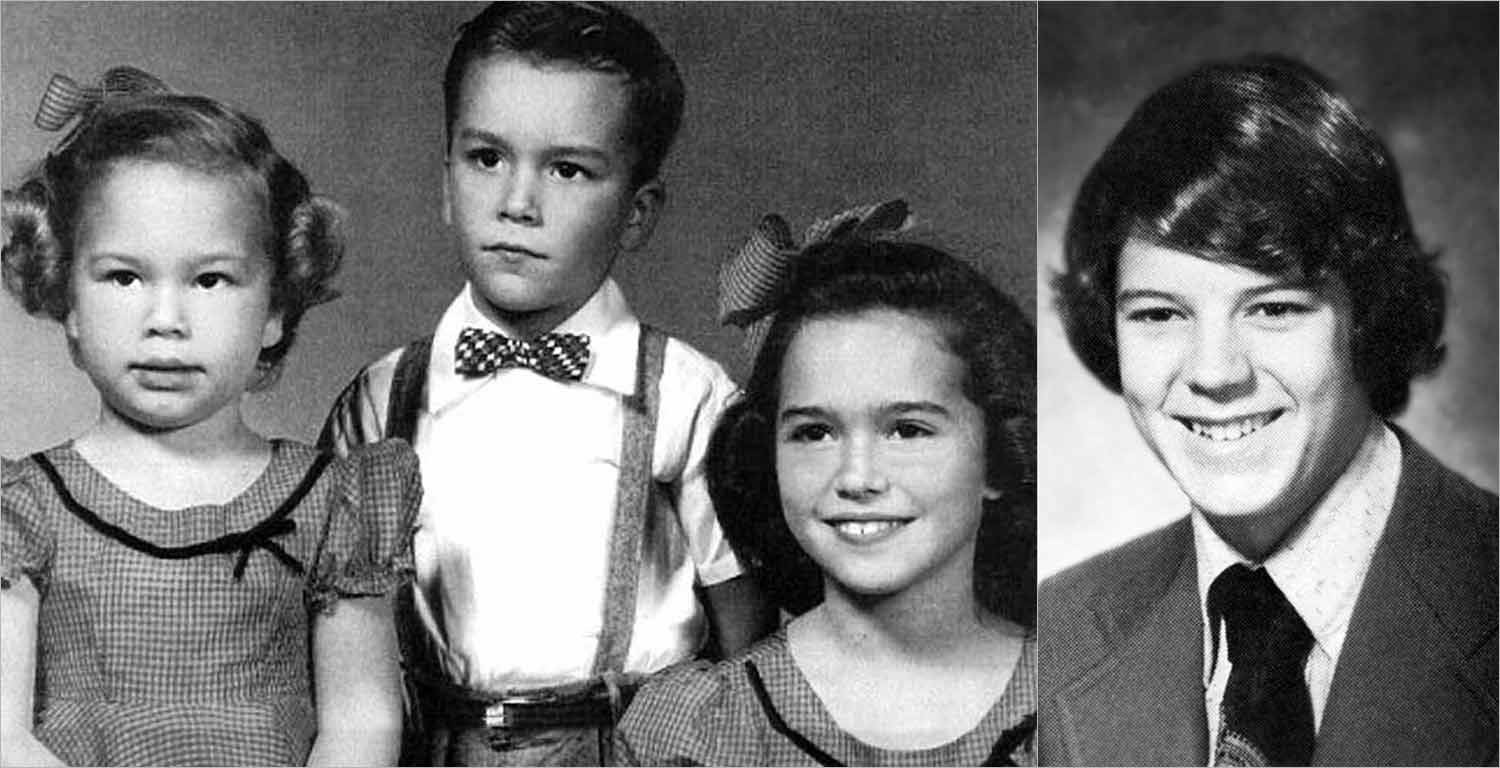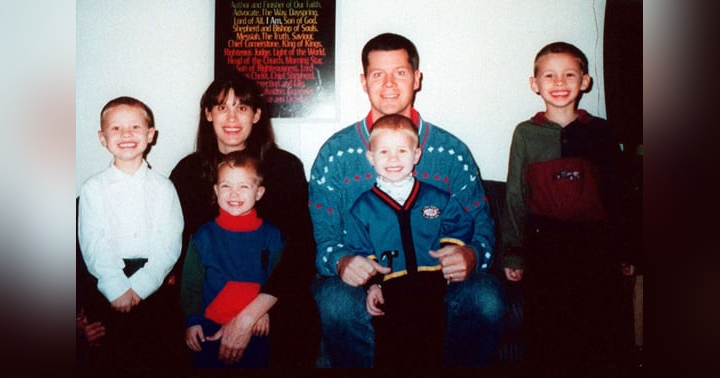I-5 Killer: Randall Woodfield

Outside the obvious example of O.J. Simpson, there aren’t many cases of a football player who was drafted to an NFL team and then took a dark path in life which led them to commit murder. (Aaron Hernandez and Sergio Brown being a couple others) Unfortunately in the case of Randall Woodfield this is exactly what happened. And that was because, after spending a short time with the Green Bay Packers in 1974 and ultimately getting cut from the team before he could play a game, he’d be driven by self-imposed shame to commit a series of rapes and murders between Washington, Oregon, and California, with the path of destruction he took across the Interstate 5 corridor leading to him being given the name the 1-5 Killer.
Randall Woodfield was born on December 26th 1950 into an upper middle class family in Salem, Oregon. But while his two older sisters later took the academic path in life, with one becoming a doctor and the other an attorney, Randall was instead far more interested in the world of sports, specifically football.
To him, it was a way to express himself and scratch his competitive itch, something he’d developed while growing up in nearby Otter Rock, a small seaside town around eight miles north of Newport. That said, for as much as he enjoyed being on the gridiron and for as popular as his talents there made him amongst his peers, there was another far darker inclination Randall had which he felt unable to control by simply playing football.
While still in junior high school, he’d begun exhibiting what would be later described as sexually dysfunctional behaviors. Basically, he had a habit of exposing himself to girls in public. Of course, given how good a player he was, his football coaches tried to brush all of this under the rug so he could continue playing unhindered but, while this was enough to stop him from being dropped from the team, his parents insisted he go to therapy anyway.
Not that this did much to get rid of those desires. No, all it did was help him to suppress them as he continued to get better and better at football. By the time he transferred to Portland State University in 1970 he was chosen to be the Portland State Vikings’ starting wide receiver.
Still though, his issues with getting into trouble continued in spite of his success on the field. Later that same year, he was arrested for vandalizing an ex-girlfriend's apartment. That was minor compared to, two years after that, he was booked again when he once more exposed himself to a group of girls in Multnomah County.
So, at that point, deciding to jump before he was pushed, Randall dropped out of college before he could graduate. A pretty big blow to his ego, but something he ultimately repaired when, during the 1974 NFL Draft, he was selected by the Green Bay Packers during the seventeenth round.
It was a huge achievement and signaled that big things were in the future for the boy from Otter Rock. Unfortunately, though, the next few months didn’t exactly play out as he’d planned because, despite having a lot of natural talent, he soon learned that the level of competition in the NFL was on another level to what he’d been used to before. And that meant he was no longer the big fish in the small pond. He struggled and was cut during training camp that February, all before he could even get a chance to play a single NFL game.
Sure, he would still get to play football on a semi-professional level when he signed with the Manitowoc Chiefs not long after this, but that just wasn’t the same. In Randall’s eyes, his inability to make it to the Packers official roster represented a massive failure on his part. And that bred a sense of shame and resentment within him which quickly mixed with his sexual delinquency issues to create a situation where, just one year later, he left that semi-pro team in Wisconsin and returned to Portland… beginning a series of robberies and sexual assaults.
Several women in the area accused him of holding them at knife point and forcing them to perform oral sex on him. Needless to say then, it didn’t take long before Randall got caught doing this and so, when police had him in custody, and he’d confessed to his crimes, he was sentenced to ten years in prison, with him ultimately being released on parole after four.
That said, it doesn’t appear his time behind bars did anything to rehabilitate him because pretty quickly after he got out, Randall continued on with this wave of rapes, with him now having graduated to outright murdering the women after he was done with them on more than one occasion. The first known victim was Cherie Lynn Ayers, an x-ray technician and an old friend of his from school.
He’d met up with her sometime on the evening of October 9th 1980 and, after dragging her back to her apartment in downtown Portland and there raping her, he bludgeoned her across the head and stabbed her in the neck.
Once Cherie’s body was discovered soon thereafter, Randall became a prime suspect because of the fact he’d been known to correspond with Cherie during his time in prison. And the suspicions that he was involved only got worse when he refused to take a polygraph test. But because his blood type did not match semen found in the victim’s body at the time, he wasn’t formally charged.
Instead, he escaped any consequences and picked back up right where he left off by killing an old college acquaintance named Darcey Renee Fix on November 27th of the same year. After that was over, and he’d gotten away with murder once more, he began a series of high profile robberies throughout the Pacific Northwest along the I-5 Corridor, with many of the women he came across during these crimes being forced to commit sex acts on him before he let them go.
So prolific was he becoming at this point, by January 1981 police had taken to labeling him the I-5 Bandit as they were yet to identify him as Randal Woodfield. That said, the moniker of mere bandit wouldn’t last for long because by the time mid-February had come around, multiple additional women would be victims of Randal’s wrath, and four of these would be outright killed.
Twenty-year-old Shari Lynn Hull, thirty seven-year-old Donna Lee Eckard, fourteen-year-old Janell Charlotte Jarvis, and eighteen-year-old Julie Ann Reitz had all met their ends by February 15th. And on top of that, twenty-year-old Susie Benet, twenty-year-old Beth Wilmot, and three additional unnamed women would also be assaulted and left fearful for their lives after their encounters with the former football star.
But these are only the confirmed victims, because as many as forty-four other murders would later be linked to Randal Woodfield too. Luckily, police were able to stop him before he could do any further damage. On February 28th 1981 a payphone call log was able to show he had made calls from a number of sites near where the murders had taken place, with this being all the evidence that was needed to bring him in for questioning.
And while Randall wouldn’t confess to any crimes here, a subsequent search of his home revealed enough evidence to charge him with murder, rape, sodomy, attempted kidnapping, armed robbery, and illegal possession of firearms in both Washington and Oregon. Not long after that, he was tried in Salem and ultimately convicted of the murder of Shari Lynn Hull, with this being enough to put him behind bars even if he hadn’t technically been found guilty of the other murders he was almost certainly responsible for.
Chris Van Dyke, the District Attorney for Marion County at the time of the trial, stated when asked afterward, “Woodfield is the coldest, most detached defendant I've ever seen.” And this was the reason the judge presiding over the case ultimately saw fit to sentence him to life in prison plus ninety years.
That wouldn’t be the end of his sentencing, because later that same year in October, a second trial held in Benton County, Oregon would see Randall also be convicted of sodomy and weapons charges, with this all adding another thirty-five years on to his existing sentence.
As it stands today, he remains locked up at Oregon State Penitentiary, with it looking highly unlikely he’ll ever breathe a breath of freedom again. Could things have turned out differently for both him and his many victims if the butterfly effect had seen his football career thrive rather than end in such disappointment? It’s possible, but there’s no way to know, because whether he’d made it on the gridiron or not, he was clearly already a man with multiple deep-rooted issues and so it’s entirely possible he would have found another excuse to kill.









